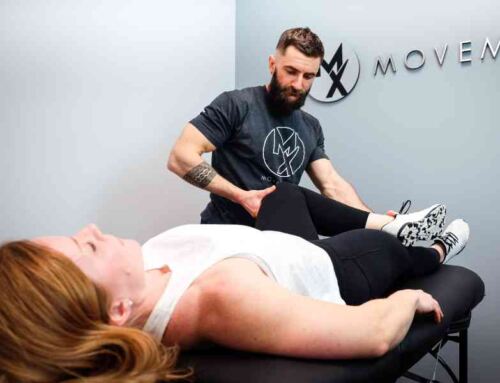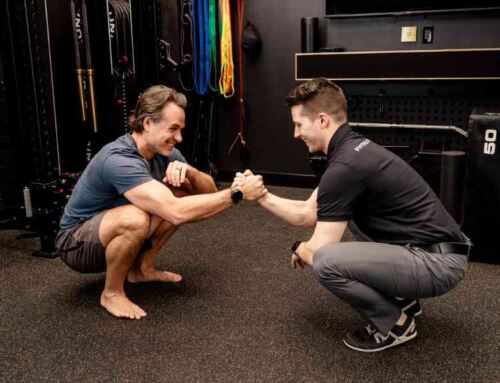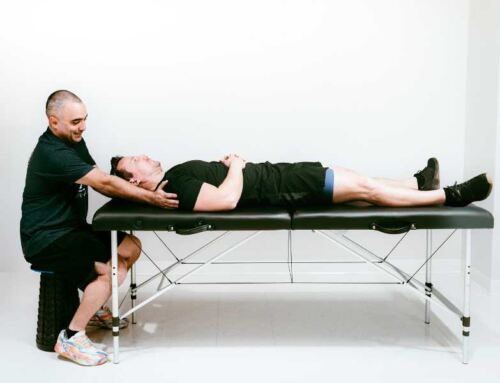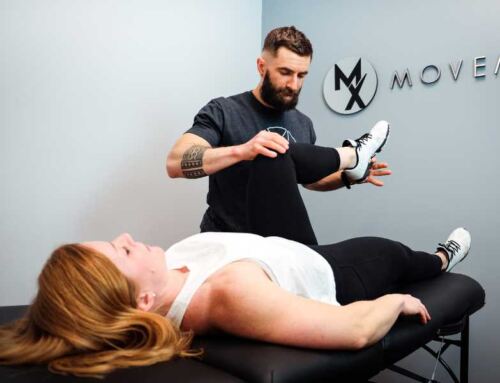How to Improve Posture When Working From Home
For many of us, work looks quite different these days.
As more and more Americans have transitioned to remotely working from home offices, not only may work look different, but it can certainly feel different as well.
Over the past few years, I’ve seen an uptick in cases of work-related neck pain, lower back stiffness, plantar fasciitis, carpal tunnel syndrome, and mid-back pain.
So what did we do? We put together this list of the top 5 tips to improve posture when working from home to minimize pain, correct your body position, and maximize your attention on the work in front of you.
What is the “Perfect” Posture?
Ok before we get too into it, let’s play ‘Myth Busters’ for a second and dive further into if a perfect posture does in fact exist. Some believe the perfect posture may be firm and rigid like a soldier at attention, whereas others think your body should be in a more reclined and relaxed position.
The short answer? There is no “perfect” posture. Our bodies were designed for movement—meaning that there is no single position your body should be expected to maintain for the entirety of your work day.
So what is the best posture? Your next one. That brings us to our first tip…
Tip #1: Avoid Sustained Body Positions
Maintaining a static body position for prolonged periods tends to be problematic for the reason we just stated above, our bodies were made for movement. For instance, sitting or standing in place for more than one hour can lead to unintended changes in muscle length and decreased blood flow throughout the body, yikes!
This can not only affect how you feel while on the clock, but also lead to a decreased ability to enjoy the rest of your day once work ends. More than half of Americans who experience low back pain spend the majority of their day sitting, let that one sink in for a bit!
Luckily, there are some very easy things you can do right now to make sure this isn’t you! I recommend setting an alarm on your phone that goes off every hour cuing you for a movement brea, utilizing reminders to move on your smartwatch or fitness device, or even chose to use the bathroom that’s upstairs instead of on the level as your work from home office, nothing wrong with getting a few extra steps in during the day!
A great (and easy) concept to utilize is the 30-minute rule. This states that for every 30 minutes spent working spend 20 minutes sitting, 8 minutes standing, and 2 minutes moving around or stretching. Trust us, your body will thank you later.
Tip #2: Be Mindful of Repetitive Tasks
Many work-related tasks are inherently repetitive. Take a second and think about how many times you perform the same work-related actions in day. How much time do your fingers spend typing on a keyboard? How often is your head turned in a certain direction? Which computer has your camera for video meetings on it? How involved are your shoulders, arms, lower back, and legs in repetitive lifting or reaching motions? When you think about it, I bet you will be surprised by the results.
If you are finding that, yeah, I am performing a lot of this particular movement throughout the day it’s time to shake it up! Move your laptop with the video camera on it to the other side of your desk, consider altering the position of your keyboard, make sure that your main work computer is slightly eye level to optimize body mechanics (see next tip). This type of awareness may decrease the risk of developing certain overuse injuries over time such as carpal tunnel, neck or lower back pain, or cervicogenic headaches.

Tip #3: Optimize Your Workstation
Research has shown that up to ⅓ of back injuries could be prevented through a better designed workspace. There are many ways to optimize your ergonomic set up, whether that’s at your desk, your backyard lounge chair, or dining room table.
Keeping the top of your monitor screen slightly above eye-level can reduce neck strain (this can feel tough to achieve with laptops but they make some cheap and effective laptop stands these days). Additionally, it’s best to keep your elbows, hips, knees, and ankles all near 90 degree angles, so adjust your chair, keyboard, and desk height accordingly.
And don’t forget about standing desks! This can be a great way to easily change up body mechanics throughout the day but again, we don’t want to stay in a static position for greater than an hour so remember to transition between sitting and standing frequently!
You can also consider using lumbar supports, footrests, or elbow/forearm rests to spread out gravitational forces and minimize excessive pressures. To learn even more about how to correctly set up your workstation, check out this article by Dr. Fred Gilbert.
Tip #4: Train Like An Athlete
- Upper Trap Stretch (2 sets of 30sec holds on both sides)
- Wrist Extension Stretch (2 sets of 30sec holds on both sides)
- Scapular Retractions (2 sets of 20 repetitions)
- Standing Back Extensions (2 sets of 20 repetitions)

Tip #5: Work With An Expert
If the tips above aren’t leading to the outcomes you desire, working with a highly-trained movement health professional, a physical therapist, likely will.
I recommend working with a physical therapist who specializes in ergonomics and orthopedics, like many physical therapists at MovementX, we specialize in understanding body mechanics and will help you get to the root of your problem!
After you sign up and schedule an ergonomics evaluation at home, you’ll run through a detailed medical history, personalized workstation assessment, and a strength and mobility examination.
With a comprehensive treatment plan targeted specifically at your goals, you’ll be able to get rid of lingering pain and get back to working at your best.
About the Author
Dr. Lauren Lynass is a physical therapist in Beaufort, SC. She is a certified in Running Gait Analysis and Strength & Conditioning. Lauren specializes in Dry Needling, Sports Injuries, and Pediatric Orthopedic Conditions (and Torticollis). Beyond her practice, Lauren is an avid runner, reader, and trailer traveler!








